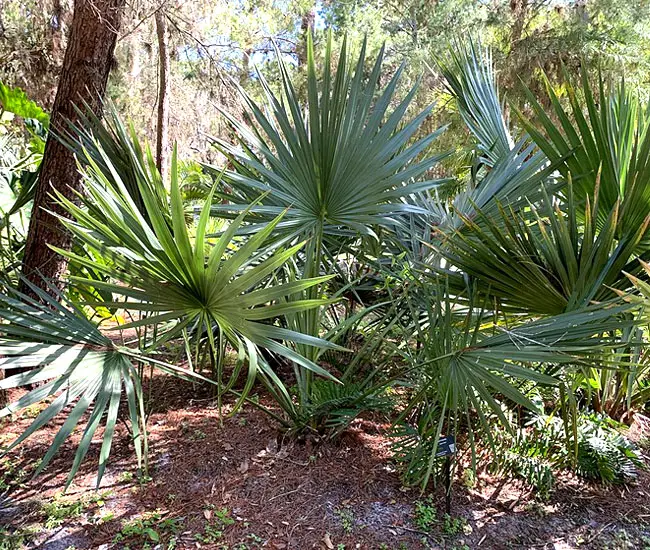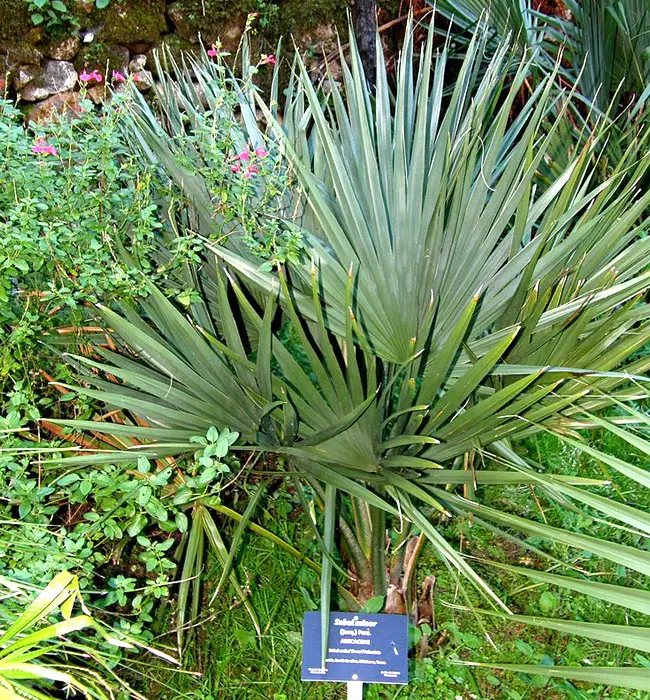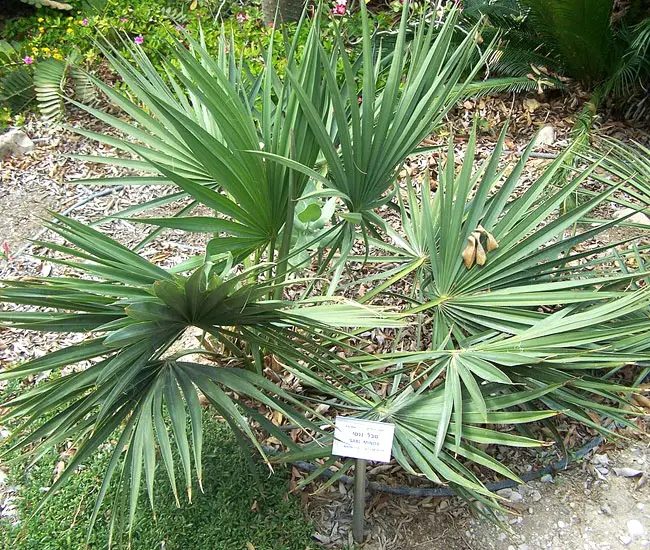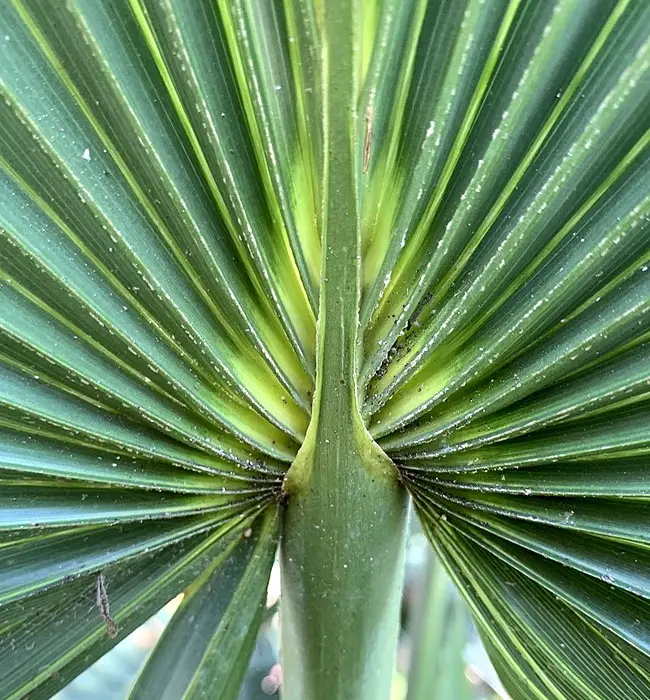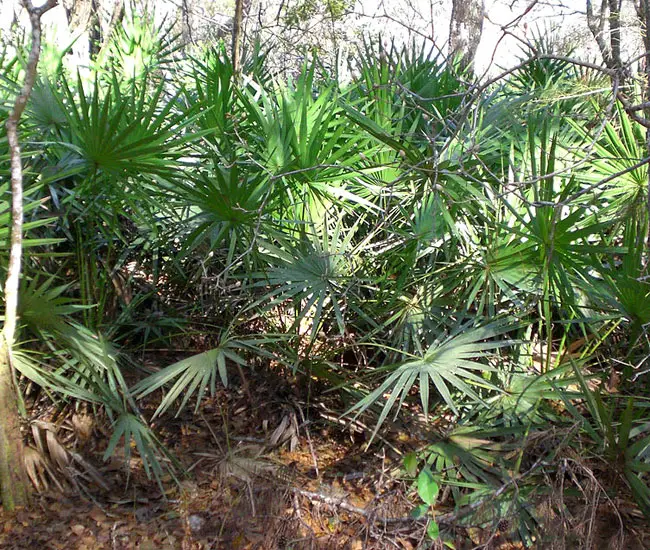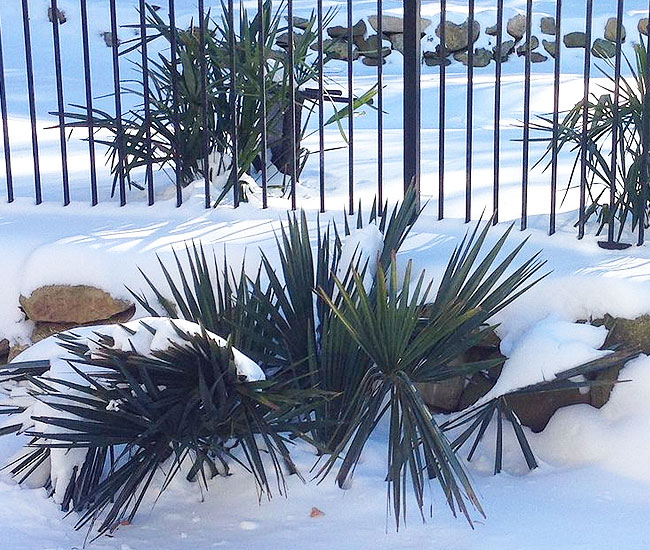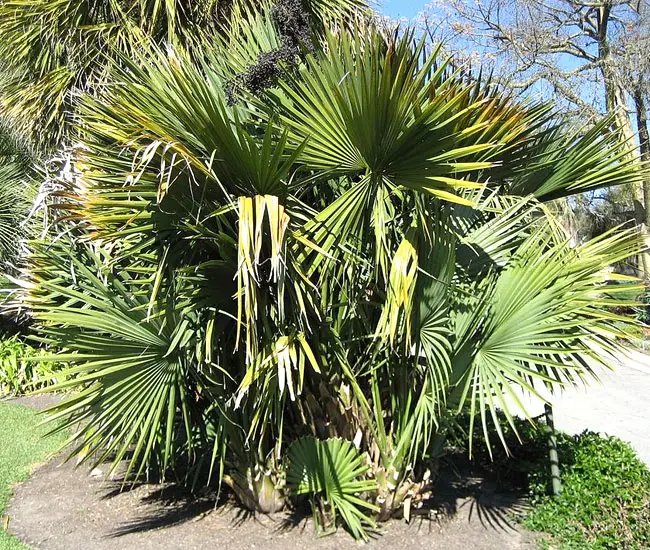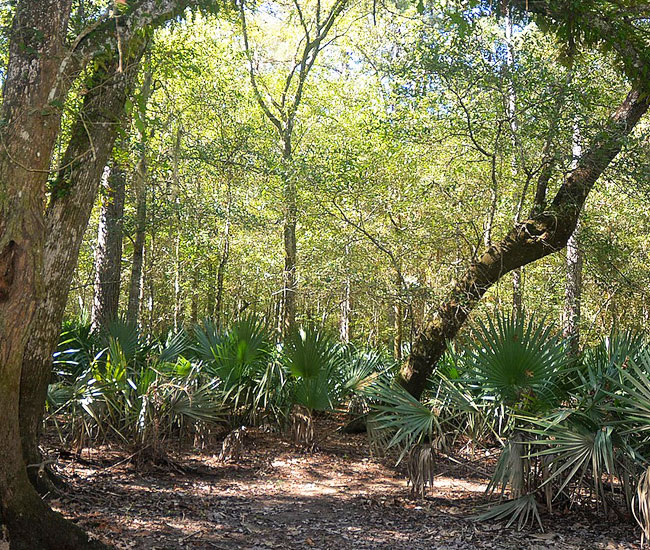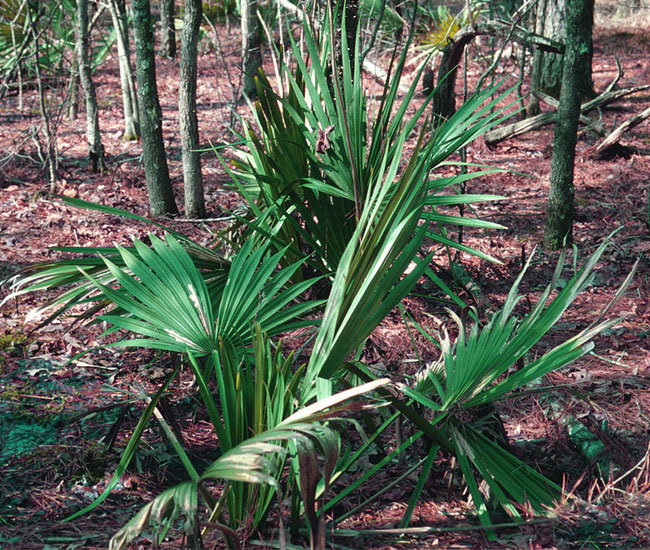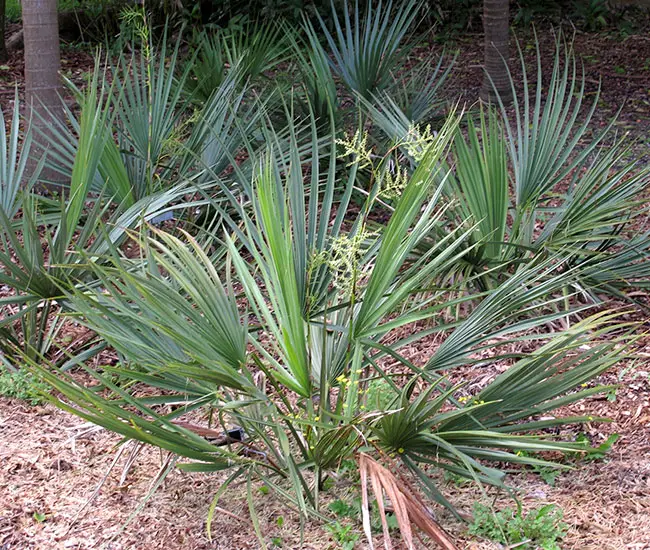
The Dwarf Palmetto Palm Tree, scientifically known as Sabal minor, is a diminutive yet hardy palm species native to the southeastern United States. It typically grows to heights of 3 to 6 feet, making it one of the smaller palm varieties.
Its fan-shaped fronds are a deep shade of green and are divided into segments, giving the palm an appealing appearance. This palm’s adaptability shines through its ability to thrive in various soil types, including sandy and clayey soils.
It also exhibits impressive resilience, withstanding both drought and occasional flooding. The Dwarf Palmetto Palm is known for its remarkable cold tolerance, enduring temperatures as low as 0°F (-18°C), which positions it for growth in USDA hardiness zones 7 to 10.
Landscapers frequently use this palm for its low-maintenance and ornamental qualities, especially in coastal and subtropical regions.
Quick Facts:
| Scientific name: | Sabal minor |
| Common names: | Dwarf Palmetto Palm, Bluestem Palmetto |
| Origin: | Native to the United States. |
| Growth Rate: | Slow. Up to up to 20ft. |
| Cold Tolerance: | USDA zones 7b – 10a (30 to 35 F). Down to 5F. |
| Light Req: | Full sun to partial shade. |
| Water Req: | Moderate. |
| Soil Req: | Adaptable. |
| Fruit: | Black fruits |
| Propagation: | Propagated by seeds. |
Sabal Minor Appearance
As the name suggests, the Dwarf Palmetto Palm is relatively small, typically reaching heights of 3 to 6 feet (0.9 to 1.8 meters). It has a compact growth form compared to many other palm species.
The trunk of the Dwarf Palmetto Palm is typically subterranean or very short, and it may not be visible above the ground in many specimens. Instead, it has an underground stem called a rhizome, from which the fronds emerge.
The palm features fan-shaped fronds with a dark green color. These fronds are deeply divided into segments, giving them an attractive and textured appearance. The fronds grow in a circular arrangement from a central point, creating a rounded canopy.
Each frond of the palm is made up of numerous individual leaflets that are stiff and glossy, contributing to the overall lush and tropical look.
Flowers and Fruits of the Dwarf Palmetto Palm
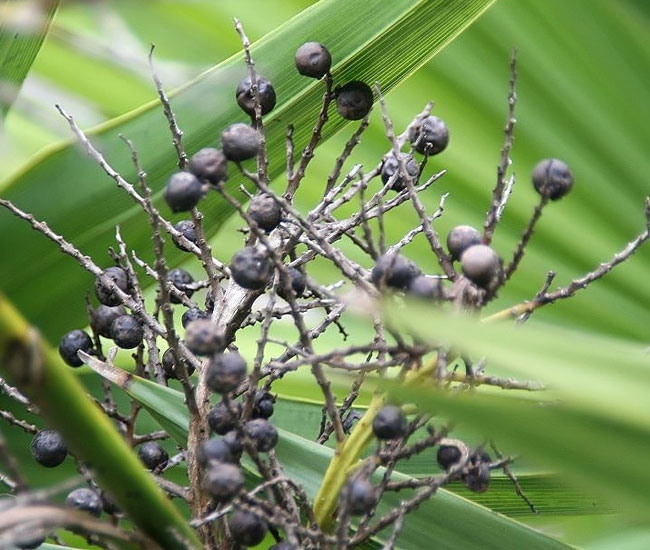
The Dwarf Palmetto Palm (Sabal minor) produces small, inconspicuous flowers that are typically creamy white or pale yellow in color. These flowers grow on long stalks and are not known for being showy or fragrant.
However, they serve an essential role in the palm’s reproduction by attracting pollinators, including insects. In terms of fruit, the Dwarf Palmetto Palm produces small, round berries that are generally black when ripe.
These fruits are relatively small, measuring about half an inch (1.3 centimeters) in diameter. While not commonly consumed by humans, these berries are an important food source for wildlife in their native habitat.
Caring for the Dwarf Palmetto Palm
These palms thrive in locations with plenty of sunlight, ideally receiving full to partial sun exposure. In their native habitat, they often grow beneath the canopy of larger trees, receiving dappled sunlight.
Soil selection is crucial, and well-draining soil is a must to prevent root rot. Dwarf Palmetto Palms are versatile and can tolerate a range of soil types, including sandy and clayey soils.
Watering should be consistent, especially during the palm’s early years to help establish a strong root system. While they become drought-tolerant once established, it’s important to keep the soil from becoming completely dry during dry spells.
Fertilization needs are modest. Applying a balanced, slow-release palm fertilizer once or twice a year during the growing season, typically in spring and summer, provides sufficient nutrients. Avoid over-fertilization, as it can harm the plant.
Pruning requirements are generally minimal, with occasional pruning to remove dead or damaged fronds. Be cautious not to remove too many healthy fronds, as this can stress the palm.
Mulching around the base of the palm with organic mulch helps retain soil moisture, regulate soil temperature, and prevent weed growth.
The Dwarf Palmetto Palm (Sabal minor) is known for its impressive cold hardiness. It can tolerate temperatures as low as 0°F (-18°C) and is typically suitable for USDA hardiness zones 7 to 10.
This makes it well-suited for regions with relatively cold winters, where it can endure freezing temperatures and still thrive once established. However, providing some protection during severe cold snaps, especially for younger plants, can help ensure their survival and maintain their overall health.
Dwarf Palmetto Palms are relatively pest-resistant but should be periodically inspected for common pests like scale and mites. If pests are detected, appropriate treatments, such as insecticidal soap, can be applied.
Interestingly, Dwarf Palmetto Palms can have a lifespan of several decades to even centuries when grown in their ideal conditions. In their native habitats, these palms can live for many years, with some individuals surviving for well over a century.
Dwarf Palmetto Palm Propagation
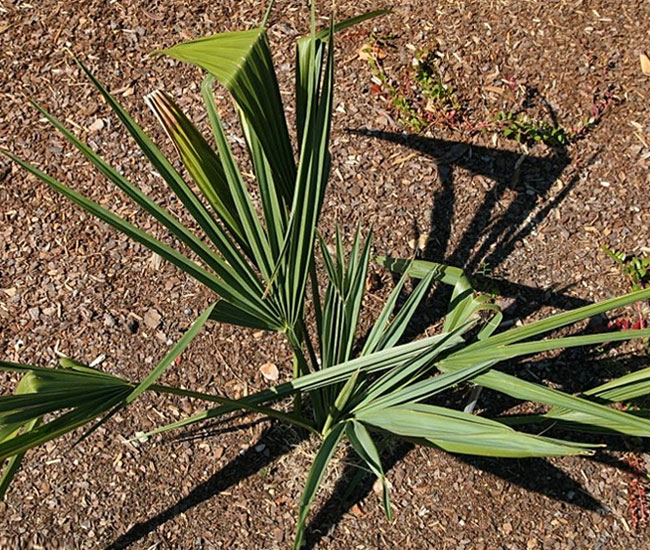
Sabal minor can be propagated primarily through seeds. But, it’s important to note that growing Dwarf Palmetto Palms from seeds can be a slow process, and the palms themselves are known for their slow growth rate. However, this method allows you to propagate new plants and expand your collection.
- Seed Collection: To propagate Dwarf Palmetto Palms from seeds, you’ll need to collect ripe seeds. Wait until the berries, which contain the seeds, turn black. This indicates that the seeds are mature and ready for harvest.
- Seed Preparation: After harvesting, remove the seeds from the berries. These seeds don’t store well and are best sown promptly.
- Planting Depth: Plant the seeds at a depth of about 1 inch (2.5 centimeters) in a well-draining potting mix. You can use containers or seed trays for this purpose.
- Environmental Conditions: Place the containers in a warm and lightly moist environment with filtered sunlight. Keep the soil consistently moist but not waterlogged.
- Germination: Germination can take some time and may vary, but typically, it can take a few months for the seeds to sprout. Be patient and continue to provide the right environmental conditions.
- Transplanting: Once the seedlings have grown large enough and have developed several fronds, they can be transplanted into larger pots or directly into your desired outdoor location.
Dwarf Palmetto Palm Pictures
